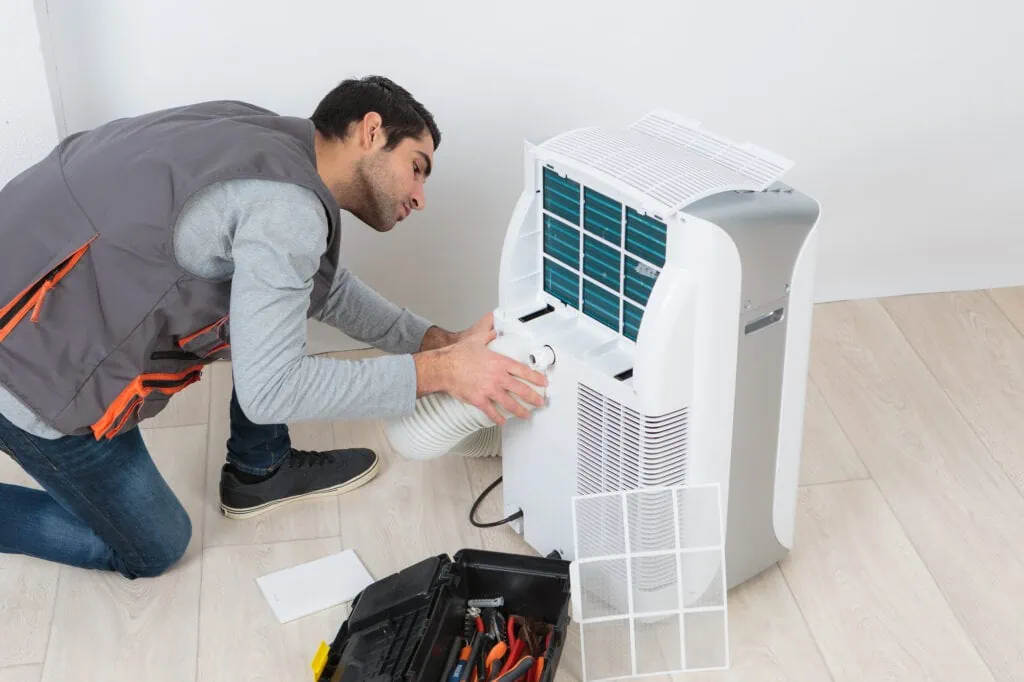One report shows that, on average, 46% of Americans are expected to experience at least three consecutive days of more than a 100-degree heat index. This excessive heat makes it difficult for you to enjoy your time indoors. This requires efficient cooling systems in your home. However, installing conventional systems can significantly increase your energy bills.
Luckily, you don’t have to feel extremely hot and uncomfortable at home as there are several non-traditional yet affordable methods to cool your indoors during the summer. With that in mind, here are seven alternatives to beat the summer heat:
1. Install A Fan
A ceiling fan is an ideal option as it assists in cooling your interiors by mechanically circulating cool air. It’s also affordable, minimizes the need for an air conditioner, consumes less energy, and has designs that can enhance your room’s decor. The following are some tips you should consider when buying a fan to ensure excellent ceiling fan efficiency:
- Type of ceiling fan: Alternating current (AC) fans are more commonly used in many households. They’re more affordable than direct current (DC) ceiling fans. However, DC fans have higher energy efficiency.
- Where to place the fan: A large room with considerable headspace will require a bigger fan capacity. You can have one centrally positioned fan or install several on the ceiling to ensure the cooling effect reaches the critical sitting areas in the room.
- The height of your ceiling: Higher ceilings require more giant fans to ensure the cool air travels the long distance to lower levels in the house.
- Fan blades: Fans with several small blades will have less noise than those with a few gigantic blades.
Aside from ceiling fans, you can also purchase movable fans that you can place next to where you’re sitting or working. You can place this in the attic to prevent heat accumulation and help keep your house cool. An exhaust fan can also help remove warm air from your bathroom or kitchen.
2. Insulate Your Home
Insulation provides a thermal barrier, blocking the exterior heat from accessing the indoor spaces. It delays the movement of warmth between two spaces with a distinct temperature difference. Insulation can be done on the walls, attic, doors, windows, or ceiling. Use materials with high heat resistance, like spray foam, fiberglass, mineral wool, or foam board, for effective heat blockage.
Homes with properly insulated walls and attics are generally more relaxed than non-insulated ones. Besides wall insulation, you can install double-glazed windows that have an internal air pocket between the two sheets of glass, hindering heat transfer.
3. Go For LED Bulbs
Conventional incandescent bulbs tend to generate a lot of warmth when switched on. So, instead of having them, you can try out the light emitting diode (LED) bulbs which emit less heat. You’ll keep your interiors cooler and save on energy bills as LED bulbs consume less electricity. It also consumes 75% less energy and can last longer than incandescent lights.
4. Use A Dehumidifier
High humidity can lead to extra warmth in your home during the summer. In this case, you need a dehumidifier to make your home cool. It can assist in decreasing the amount of moisture in indoor air, thereby cooling your home. It can also reduce the possibility of mold growing in your house. A dehumidifier comes in various sizes, and you should pick the one that’ll work effectively for your home.
5. Switch Off Your Appliances
It’d help to turn off your unused appliances because they can generate unwanted heat in your home. Moreover, you may want to consider other alternatives to mainstream household appliances. For instance, you can hang your clothes outside instead of using the dryer. You can also clean dishes manually instead of using a dishwasher. Moreover, you can prepare meals outside to lessen heat generation inside your home.
6. Use A Heat Blocking Window Film
Heat-blocking window films are an excellent option to keep your home cooler without relying on air conditioning. Windows allow heat to enter your home. So, blocking the heat inlet will help keep the interiors cooler. Window films can also protect you and your furniture from harmful ultraviolet rays, ensuring they maintain their lustrous finish for a long time.
7. Leave The Doors And Window Open
Leaving your doors and windows open during the day help with air circulation. If they’re closed, the stagnant indoor air will quickly accumulate heat to unbearable levels. It’s an excellent idea for a closed floor plan home.
Conclusion
It feels good to know you can cool your home during summer without over-relying on expensive air conditioning systems. Keeping the interiors cool can block heat entry and boost indoor air circulation. You can achieve this through the tips shared above. These alternative cooling methods can save you money in the long run.




